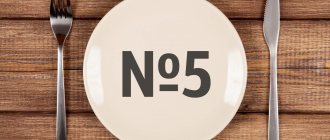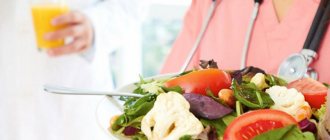What is 16/8 Intermittent Fasting?
For gaining pure mass, this method is especially productive, especially since high-quality and healthy products are included in the daily diet. The essence of the method is to divide the day into two time intervals - the period of food consumption and the fast. This type of cyclic fasting involves 16 hours of complete abstinence from eating and 8 hours of eating. At first it may seem unrealistic, but you need to remember the sleep phase, which already lasts 7–9 hours and occurs without eating.
If you add another 7–9 hours, the hunger strike ends and you can eat. You should start with a 3-4 hour fast after waking up, i.e. have breakfast only at 12 o'clock, when the so-called eating window opens. By this time, appetite increases noticeably, and hunger can be satisfied after a long period of abstinence from food. Beginners and professional athletes have chosen this technique and supplement it with regular training to enhance metabolism and intensive release of hormones. Below is a brief description of the two periods:
- Hunger strike. Solid food is strictly prohibited, only water and drinks without calories are allowed, for example, green tea without sugar or coffee without any additives (milk, cream).
- Food window. During this period, you need to eat the daily amount of calories, giving preference to fractional meals. The first meal should be chosen as high in calories as possible, the rest will be light and will not overload the stomach.
Diet rules
One way or another, before judging whether the diet will work or not, you need to understand its rules and find out why it is still so popular. Hunger strikes, in fact, have long become something completely ordinary for many people.
However, most of them approach this process incorrectly and can greatly harm their health. This is why the 16/8 diet is considered the most standard and relatively simple within the current reality. And the rules of the diet are quite simple:
- Firstly, to go on such a diet, you must have an established schedule and sleep pattern . Without this, there may be no results. Therefore, before testing your strength through this method, think about how organized your daily schedule is. Think about what time you are most active and what hours you rest and sleep. Based on this information, proceed to the next point.
- Next comes the most important thing - you choose the time for the fast and the time for nutrition . As mentioned above, you need to choose it based on your own schedule. Think about what time do you eat most often? Try creating a new schedule so that your favorite time to eat doesn't disappear (even if it's in the evening). But, of course, you still can’t eat before bed. Maximum 2 hours before bedtime.
- Approximately the graph might look like this. You wake up at 8 o'clock, but don't have breakfast right away. Let your body wake up, drink a glass of water on an empty stomach, take your vitamins and you can do some exercise. After 2-3 hours there will be the first meal.
- The report begins with your breakfast . For example, you ate at 10 am, and now until 6 pm you will need to gain your calorie intake for the day.
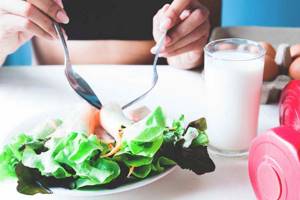
- After 6 pm your fast begins. Before going to bed, you can drink kefir or milk if you have time to get hungry, but it’s better not to do this. With this schedule, it is advisable to go to bed no later than 10-11 pm. This way, you won’t get hungry and will stick to a normal sleep and eating schedule.
In fact, eating the entire amount of calories in 8 hours is quite difficult , because many simply do not have time to eat in their active rhythm of life. However, the more active you are in your day, the better! Your activity burns calories. But you can’t skip meals or postpone them for a couple of hours.
Carry food with you, go out for a break or lunch, be sure to take into account the fact that if you don’t eat or skip one of the meals, you won’t be able to eat anymore in a day. This threatens loss of strength at best, nausea, vomiting and other serious side effects at worst.
results
When a person eats, insulin increases in the blood, and metabolic processes slow down significantly. This is the beginning of weight gain, obesity is possible. All processes during fasting are aimed at restoring the health of the body. With a lack of calories, the level of sugar and insulin in the blood significantly decreases, while the concentration of growth hormones increases. A feeling of hunger appears. At this moment, catecholamines are sent to fat cells, starting the process of burning subcutaneous fat in problem areas. In this way you can not only lose weight, but also maintain muscle mass.

Flaws
But there are plenty of disadvantages and problems with diets. The 16/8 diet has the following disadvantages:
- not everyone can withstand such a restrictive method for losing weight;
- frequent feeling of hunger (at first);
- rare but possible side effects;
- prostration;
- lack of mood;
- the risk of slipping and eating a lot of food within the allowed interval;
- difficulty of implementation for some people (for office workers, for example).
Advantages
Intermittent fasting is actively used in bodybuilding, because with its help you can “draw” the muscle corset and visualize all muscle groups. Having studied the essence of the proposed method, people who were far from increased physical activity actively began to fast according to this scheme. The benefits of 16/8 intermittent fasting are:
- productive restoration of the function of the gastrointestinal tract;
- establishing strict appetite control;
- stabilization of cholesterol, glucose and blood pressure levels;
- acceleration of metabolism;
- renewal of injured tissues, skin rejuvenation;
- reducing inflammation, getting rid of acne;
- accelerating the process of cell regeneration;
- prevention of cancer;
- productive weight loss;
- cleansing the liver and stomach of toxins and waste;
- strengthening local immunity.
Efficiency
Thanks to the research of Yoshinori Ohsumi, the effectiveness of fasting has been proven. Periodic refusal of food has a positive effect on the condition of the body:
- Increasing life expectancy. The aging process slows down. In combination with a pronounced healing effect, a person is able to preserve youth and beauty for a long time.
- Strengthening the immune system. As a result of cleansing, harmful substances and bacteria, which cause various diseases, leave the body. The functioning of the immune system is restored. It is much easier for cells to fight negative factors from the outside.
- Feeling great. During the fasting process, minor side effects are possible, but they go away quickly. At the end of abstinence, a person feels much better. Becomes much more active.
- Improved brain function. It is much easier for a person to concentrate on various subjects and complete tasks.
- Restoration of the functioning of internal organs and systems. Fasting provides overall health.
Principles
In 16/8 intermittent fasting, the first number indicates the time interval of the fast, the second is the food window, which allows the consumption of certain food ingredients and dishes. The time for hunger begins at 21.00 (in the evening after a light dinner), and ends at 13.00, when you can organize yourself a hearty and high-calorie breakfast . Here are valuable recommendations for those who have chosen this method of correcting excess weight:
- The recommended number of meals during the eating window is at least 2–3 times.
- On an empty stomach, you need to do a workout in which you consume 10 g of BCAA amino acids.
- Healthy complex carbohydrates are welcomed during the first meal, and the remaining meals require increasing the amount of protein consumed.
- You will have to live according to the proposed routine constantly, making such a food system the usual norm.
Rules
With intermittent fasting, there are certain requirements, the observance of which helps to productively burn fat, maintain muscle mass, normalize digestion and cleanse the liver. Here are the rules in question:
- The daily calorie intake is selected individually, and it must be consumed during the eating window.
- You are allowed to eat from 2 to 8 hours; the rest of the time it is recommended to drink only clean water without gas.
- During the food window, it is important to completely avoid eating baked goods, fast food, fatty and fried foods, processed foods high in fat and carbohydrates, confectionery and flour products.
- During periods of hunger strike, you should lead an active lifestyle; you can play sports without the risk of burning muscle mass (it is recommended to exercise on an empty stomach).
- It is necessary to limit the intake of simple carbohydrates into the body and control the water regime. The acceptable daily water intake is 2 liters, more is possible.
- There are 3 main meals, between which you can snack on fresh vegetables and fruits.
- It is advisable to reduce the portions by half - no more than two fists in volume, be sure to reduce the daily calorie content of the dishes.
- Daily portions of animal fats should not exceed 50 g, and they must be consumed in the first half of the eating window.

Features of the study
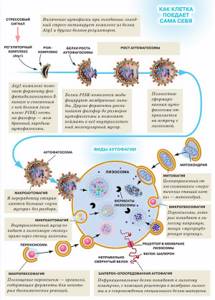
For what research on fasting did a Japanese scientist receive a Nobel Prize in 2016? According to Yoshinori Ohsumi, such a unique phenomenon as autophagy helps in the fight against cancer and even dementia. A similar discovery was made back in the 60s of the last century, but scientists did not attach any significance to it then. The Japanese made a significant contribution to deciphering this concept.
Autophagy is a recycling process followed by the elimination of all unnecessary substances in the human body. It is thanks to it that the cellular composition is gradually renewed, and at the same time waste, toxins and infections that have entered from the outside are disposed of. Autophagy occurs as a result of stress, which is fasting.
Preparation
Certain preparatory measures for intermittent fasting, for example, reducing the calorie content of the daily menu or conducting a course of cleansing enemas, are not required. There is also no need to introduce strict restrictions on the number of daily meals. The only requirement is a final decision to lose weight and the desire to achieve your goal. To make this new stage in your life much easier, here are valuable recommendations from nutritionists:
- switch to proper nutrition;
- check kidney function (exclude extensive pathologies);
- control the body’s water regime;
- do not overeat, avoid obesity;
- control the total caloric content of dishes.
There are also no specific recommendations regarding exit from cyclic fasting. From the experience of athletes, it becomes obvious that at first a person who has lost weight should not overeat, otherwise he will suffer from indigestion, nausea, heartburn, heaviness in the stomach, and general weakness. Food should be light, always balanced and fortified. Therefore, a gradual exit from the already habitual state of hunger strike is important. It is important not only to lose weight, but also to improve your own body health.
Daily schedule for intermittent fasting 16/8
If the final choice fell on this progressive method of correcting excess weight and defining the muscle corset, you must adhere to a certain daily routine. This is easy to do, especially since the days repeat themselves. Here is an approximate diagram for each day by the hour:
- 8.00 – drink a glass of clean water, take 10 g of BCAA;
- 9.00 – treat yourself to green tea or coffee without any additives;
- 11.00 – drink green tea or coffee again;
- 12.00 – consumption of 10 g of BCAA is acceptable;
- from 12.00 to 13.30 – train on an empty stomach;
- 14.00 – first meal with a total calorie content of 50% of the total permissible amount of calories;
- 17.00 – second meal with a calorie content of 25% of the total;
- 20.40 – third meal;
- from 21.00 to 13.00 – a period of fasting, when only water is allowed.
This is just one example. Everyone who wants to lose weight builds their daily routine independently, the main thing is to train on an empty stomach in order to productively burn excess calories using the released energy and dissolve accumulated fat deposits. When cutting and gaining muscle mass, not only the daily routine is different, but also the diet.
Menu and products for intermittent fasting
It’s worth clarifying right away that 16/8 intermittent fasting involves training days, which alternate with rest days. In the first case, fats and carbohydrates are welcome in the daily diet, since excess calories are still burned due to increased physical activity. On rest days, it is advisable to focus on proteins in large quantities in the diet menu. Below are the permitted food products, according to the declared classification (BJU):
- fats: butter, dairy products, chocolate, lamb, fatty fish, chicken, goose, duck, halva;
- carbohydrates: cereals, potatoes, pasta, legumes, honey, beets, dates, confectionery, figs;
- proteins: poultry, fish, low-fat dairy products, lean cheeses, eggs, lean cereals.
Based on the list of permitted food products, taking into account the choice of the day, you can create a varied menu for productive weight loss - satisfying and healthy. Here is an approximate dietary plan for a rest day, which consists of three main meals and several snacks:
- breakfast: oatmeal with water and honey, unsweetened tea, dried fruits;
- snack: fresh vegetable or fruit;
- lunch: boiled chicken or beef with vegetables, berry juice;
- second snack: low-fat yogurt, 1% kefir;
- afternoon snack: low-fat cottage cheese;
- dinner: boiled fish with vegetables.
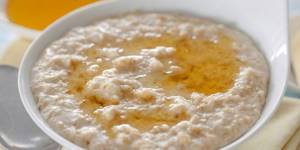
Contraindications
Not everyone can use intermittent fasting for the purpose of productive weight loss, since there are medical contraindications. If they are violated, you can only worsen your overall health, provoke vitamin deficiency and accompanying pathologies, dizziness and other unpleasant symptoms that reduce the quality of life:
- tuberculosis;
- diabetes;
- malignant tumors;
- chronic diseases of the cardiovascular system;
- impaired blood pressure (hypotension, hypertension);
- body mass index less than 15;
- urolithiasis disease;
- periods of pregnancy, lactation;
- instability of the central nervous system (increased irritability, stress);
- psychological problems (fear of being hungry);
- extensive damage to the gastrointestinal tract (gastrointestinal tract);
- childhood.
Most of the above restrictions are often permanent, but there are temporary medical contraindications. Before choosing such a nutrition system, you need to consult with your doctor or nutritionist. To avoid severe symptoms of hypovitaminosis, it is possible for a specialist to prescribe multivitamin complexes in the form of tablets. This option for weight loss is quite extreme and does not fully take into account the biological rhythms of the human body. As mentioned above, this option is more suitable for athletes who want to maximize muscle mass expression. For most people who are overweight or obese, eating a balanced diet with small amounts of food spaced 2-3 hours apart is enough to avoid overeating after a long fast. It should also be taken into account that people engaged in production simply vitally need energy in the first half of the day, which comes during a proper, balanced breakfast and provides the body for 4-5 hours.
How to get out of a diet
- Gradually increase the period of time in which you can eat. Every day, expand the border, and instead of 8 hours, go to 8 hours and a half, and so on.
- Increase your load and play sports more actively . Go to the gym, gradually start doing strength exercises.
- Doing cardio is a great way to get lean after a diet and see the results of your weight loss. Two or three times a week for 40 minutes will be enough.
- Do not change the rhythm of life and stick to the same sleep and nutrition schedules, with minor deviations.
- Drink more water and you will be healthy!






